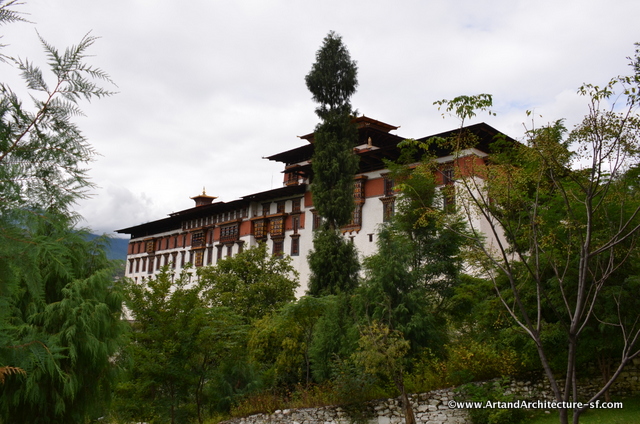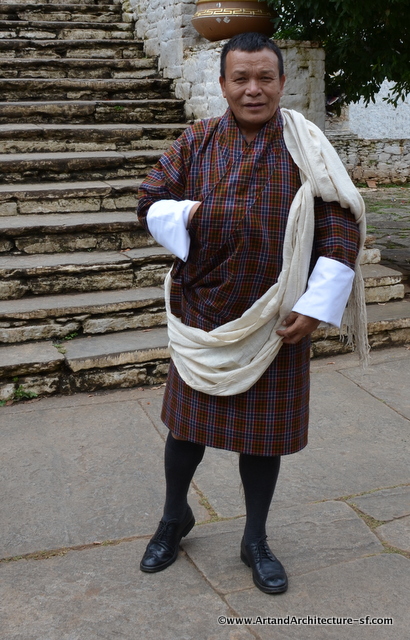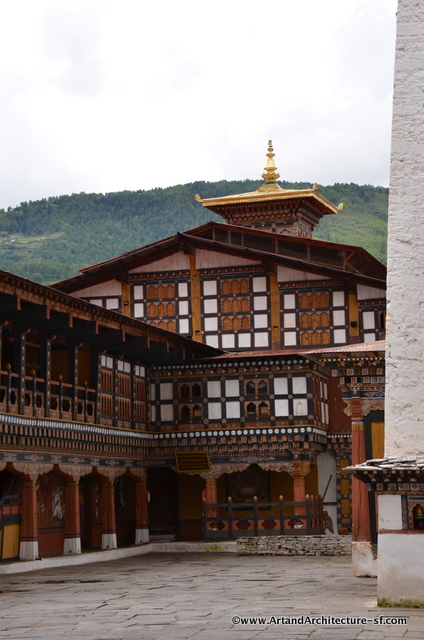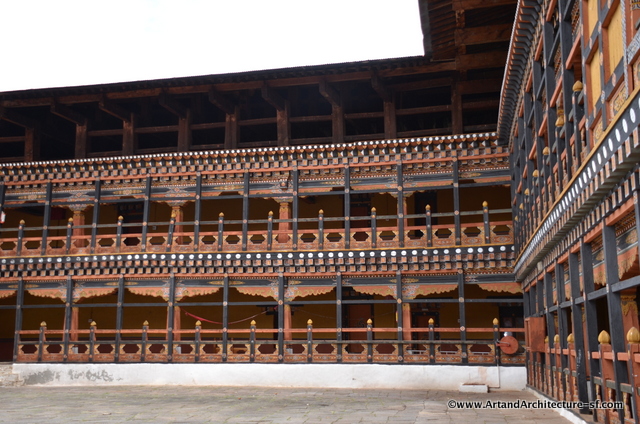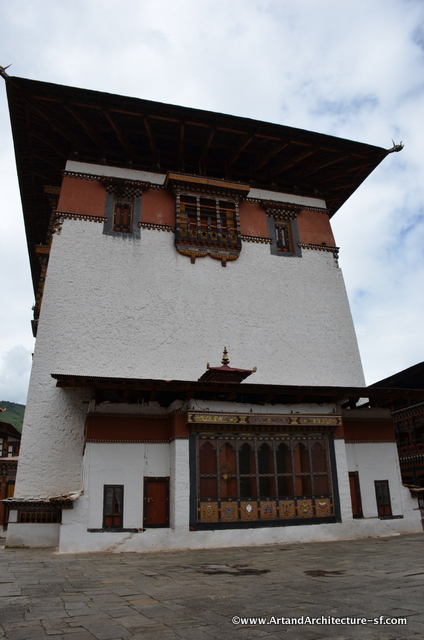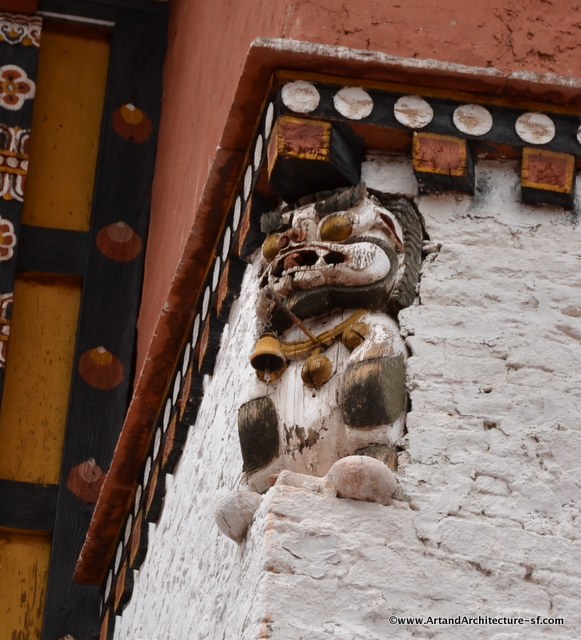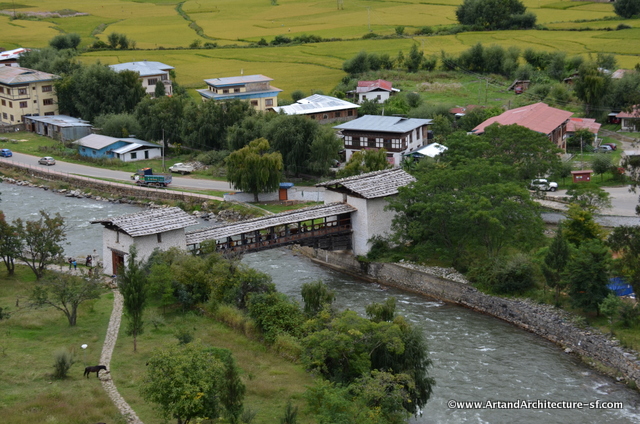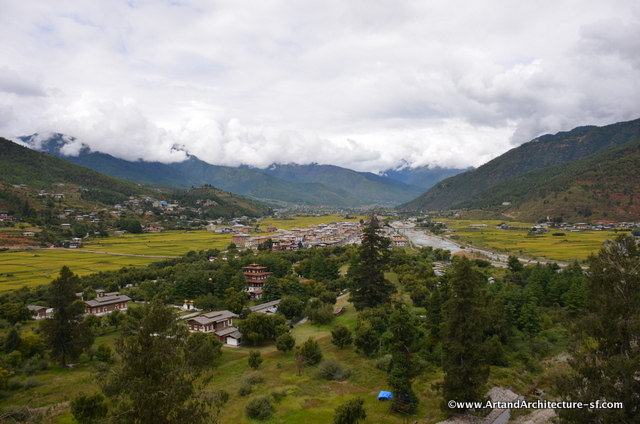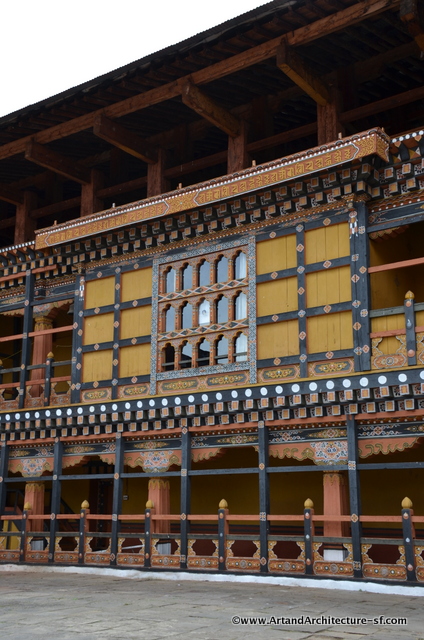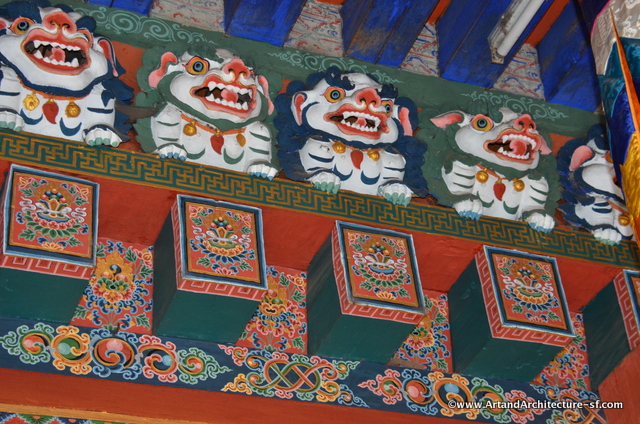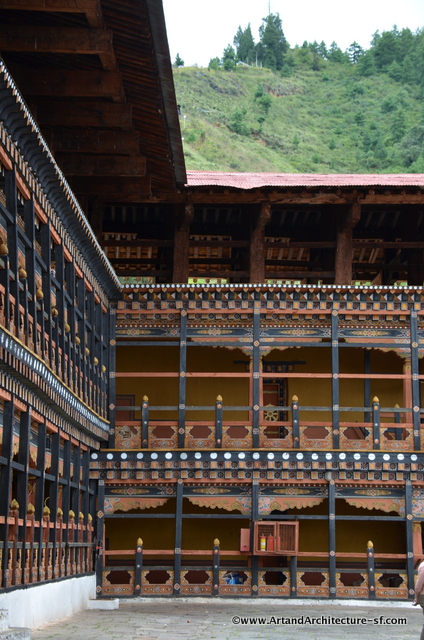September 22, 2015
Paro, Bhutan
Dzongs serve as the citadel of each of the 20 districts of Bhutan, they are awe inspiring architectural wonders. Dozens were built of stone or rammed mud and lots and lots and lots of timber. The wide planked Bhutan Pine floors are just one part of the woodworking mastery in these buildings. (Sorry but those floors were in areas off limits to cameras).
During the 15 and 1600s the dzongs primary function was that of the fortress. Today they are split in two, half being the administrative center of the region the other half serves as a religious center and housing for many of the monks. (in the case of the Paro dzong, at least 200 monks)
Tourists are required to wear long sleeves, collared shirts and long pants or skirts. Bhutanese must don the Kabney. The Kabney is raw silk, normally 35 x 118 inches and with fringe, it runs from the left shoulder to the right hip. The general public wears white, members of the national assembly wear blue, the judges green, the district administers or Gups wear white with red, the Lyonpos or ministers wear orange and the king wears saffron.
The original Paro Dzong was built in 1647, it survived the 1897 earthquake but had to be rebuilt in 1907 after having burned completely to the ground. There are no architectural plans when building a dzong, the builders simply rely on a mental concept of what is to be built. Each dzong has unique concepts but basically they follow a standard plan.
The main courtyard of the dzong is called the dochey. It is paved with large flagstones and is surrounded by rooms that serve as monk’s quarters and classrooms.
The central structure in the middle of the courtyard it called the utse.
The Paro dzong is the most well known and impressive in Bhutan. The correct name is Rinchen Pung Dzong and means Fortress on a Heap of Jewels.
Below the dzong is a traditional wooden bridge, this one is called Nyamai Zam and spans the Paro Chhu. This is a reconstruction, as the original was washed away in 1969.
The area of worship is off limits to cameras, however, it was used in Bertolucci’s 1995 film Little Buddha.
Kuzuzangpo
